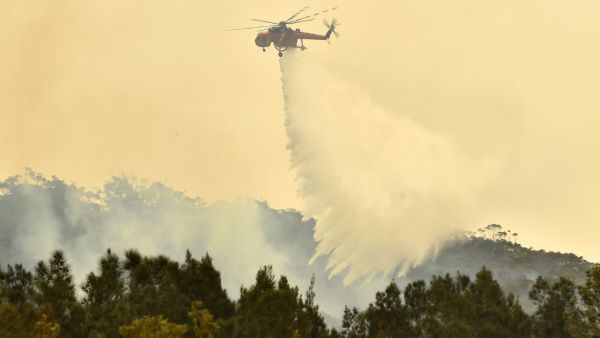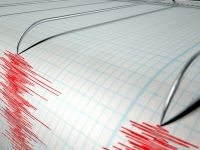The premier of New South Wales where dozens of bushfires rage has declared a seven-day state of emergency as worsening weather conditions threaten to exacerbate the situation.
NSW Premier Gladys Berejiklian said Thursday the state of emergency will begin Friday at 9 a.m., giving officials the ability to call forced evictions and close roads, among other emergency powers.
"Given forecast conditions on Saturday and the unpredictable nature of current fire fronts, a state of emergency has been declared for seven days commencing tomorrow morning," Berejiklian said in a statement. "Please teak the advice of our emergency services personnel to stay safe."
The Australian Bureau of Meteorology said there will be elevated fire dangers for the states of NSW and Victoria starting Saturday with temperatures in the 100s with strong winds.
NSW Rural Fire Service Deputy Commissioner Rob Rogers said conditions could be the same or worse as they were on New Year's Eve when at least two people were killed. Since Monday, at least seven people have died due to the fires.
"Crews are working hard to get some containment before Saturday but we are concerned about that fire because of its potential run into far western Sydney," Rogers said.
Berejiklian said the reason it was being called ahead of the weekend was to give warning to all authorities that they would be subjected to forced evacuations, road closures and anything else that would be required.
"We don't take these decisions lightly but we also want to make sure we're taking every single precaution to be prepared for what could be a horrible day on Saturday," she said.
She had previously declared a state of emergency on Dec. 19.
The NSW RFS has declared a "tourist leave zone" for about 5,400-square miles from the state's southern border with Victoria to Nowra, about 100 miles south of Sydney.
"We're undertaking the largest relocation of people out of the region in history," NSW Transportation Minister Andrew Constance told The Sydney Morning Herald. "We need people to listen, respond and get out."
Australia National University has decided to close several campuses until Tuesday due to hazardous smoke conditions.
"There is no immediate threat to the campus and this is a precautionary measure to ensure the health and wellbeing of our community," ANU acting Vice-Chancellor Mike Calford said in a statement.
Since Wednesday, fires have destroyed 382 homes along Australia's south coast and a total 1,298 during the prolonged fire season, the NSW RFS said.
On Thursday, some 2,000 firefighters were battling more than 100 bush and grass blazes throughout the state with less than half contained.
A funeral was also held Thursday for Geoffrey Keaton, one of two NSW RFS volunteer firefighters killed Dec. 19 when a tree fell on their fire truck as they were responding to a blaze.
This article has been adapted from its original source.








